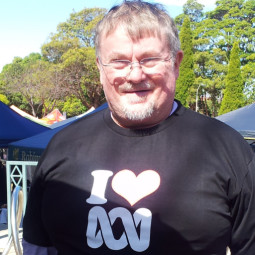Inequality is a systemic feature of Australia and of similar societies and economies. Inequality is the product of the capitalist market system where wealth is transmitted through families.
ACOSS, among others, charts income and wealth inequalities in Australia and shows:
- The highest 20% income group has six times the income of those in the lowest 20% income group.
- Those in the highest 20% wealth group have 90 times the wealth of those in the lowest 20% wealth group.
- People in the highest 20% income group receive 42% of all national income, which is more than the share of the lowest 60% combined.
- The average wealth of a household in the highest 20% wealth group, at $3.25 million, is over ninety times times that of the lowest 20% wealth group, at $36,000.
- The average wealth of the highest 5% wealth group is $6,795,000.
Wealth is distributed more unequally than income and almost half of all wealth is owned by the richest 10%. The total wealth of this group is nearly three times that of the ‘bottom’ 60% of the population. The three most important forms of wealth are housing, superannuation and shares and investment. The richest 10% own considerably more of these, with the ownership of shares and investments the most concentrated.
|
Average wealth ownership per person |
||
|
|
In Bottom 60% |
In Top 10% |
|
Total wealth |
277,000 |
4,754,000 |
|
Home |
120,000 |
1,413,000 |
|
Superannuation |
56,000 |
897,000 |
|
Shares & investments |
28,000 |
1,441,000 |
|
Data for 2020 from ACOSS |
||
Inheritances go disproportionately to those who are wealthy. This is especially so with shares and investments. Moreover, those with higher incomes and more wealth can save and invest more and take greater advantage of tax benefits linked to superannuation, negative gearing and capital gains.
Why inequality matters
As Christopher Sheil writes in 2021
Because of the growing volume of evidence that increasing economic inequality inhibits economic growth, destroys social cohesion, undermines democracy, and exacerbates myriad social problems — including the management of COVID-19 and other health problems.
Or as Bernard Crick wrote in 1987
..without a sincere desire to achieve an egalitarian society, any democratic socialist movement loses its dynamic and lapses back into a directionless pragmatism.
Relative and absolute issues
Income and wealth inequalities are relative matters; the concern is to limit the gap between top and bottom and ensure that no one is excluded from decent living standards.
But, as Crick wrote, life expectancy should be an absolute matter to end the different rates of mortality between social classes and ensure equality of life and death.
Equality of life and death has not been achieved in Australia in the 2020s. The target to close the life expectancy gap of Aboriginal and Torres Strait Islander peoples by 2031 is not on track. The life expectancy of Aboriginal and Torres Strait Islander females born in 2015–2017 is 75.6 years compared with 83.4 years for non-Indigenous females. For males the difference is 71.6 years compared with 80.2.
In contemporary Australia, life expectancy is clearly linked to socioeconomic status. On 2017-18 data, average life expectancy in the electorate of Bradfield was 86.3 years; this was the highest of any federal electorate. Life expectancy in Lingiari, the lowest, was 10.8 years lower at 75.5 years. 84 per cent of the variation in divisional life expectancy can be explained by SES and Indigenous status. It is shown in figure 1.

Fig 1 Life Expectancy and Socio-economic status
The necessary policies
- A social security system that keeps people out of poverty.
- Safe, secure and affordable housing for all.
- Properly funded policies for ‘closing the gap’ that are agreed with First Nations’ people.
- Jobs for all and the end of under-employment.
- Alter the tax system to remove biases against women and people on low incomes and that favour those with substantial wealth.
- Curb tax avoidance and evasion by individuals and corporations.
- Increase public revenue and public spending to provide universal welfare, health services, child and aged care, without user-pays.
(This article is part of the SEARCH Activists Guide to the 2022 Election. You can download the entire guide by clicking here.)

